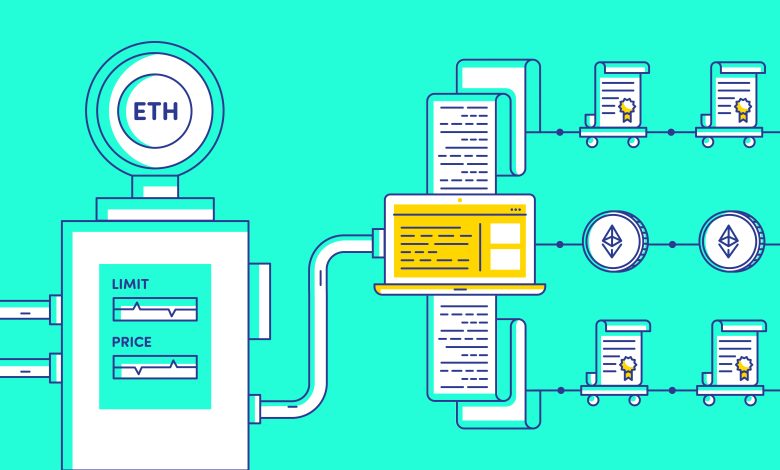Understanding Gas Fees in Ethereum Transactions

- What are gas fees in Ethereum transactions?
- Factors influencing gas fees in Ethereum transactions
- How to calculate gas fees for Ethereum transactions
- Strategies to optimize gas fees in Ethereum transactions
- Common misconceptions about gas fees in Ethereum transactions
- The future of gas fees in Ethereum transactions
What are gas fees in Ethereum transactions?
Gas fees in Ethereum transactions refer to the amount of cryptocurrency that users need to pay to miners to have their transactions processed on the Ethereum blockchain. Gas fees are essential to ensure that transactions are prioritized and executed in a timely manner.
Gas fees are calculated based on the computational power required to process a transaction and the current network congestion. When the network is busy, gas fees tend to be higher as users compete to have their transactions included in the next block. Conversely, when the network is less congested, gas fees are lower.
It is important for users to set the right gas fee when sending transactions on the Ethereum network. Setting a low gas fee may result in delays or even rejection of the transaction by miners. On the other hand, setting a high gas fee may lead to unnecessary costs.
To determine the appropriate gas fee for a transaction, users can use tools like gas price calculators or wallets that provide recommendations based on current network conditions. By setting the right gas fee, users can optimize the cost and speed of their Ethereum transactions.
Factors influencing gas fees in Ethereum transactions
Gas fees in Ethereum transactions are influenced by several factors that users need to consider before initiating a transaction. Understanding these factors can help users make informed decisions and optimize their transaction costs. Some of the key factors that influence gas fees in Ethereum transactions include:
– **Network Congestion**: When the Ethereum network is congested, with many transactions being processed simultaneously, gas fees tend to increase as users compete to have their transactions included in the next block. During times of high network activity, users may need to pay higher gas fees to ensure their transactions are processed in a timely manner.
– **Gas Price**: The gas price is the amount of Ether that users are willing to pay for each unit of gas used in a transaction. Setting a higher gas price can help transactions get processed faster, especially during periods of network congestion. However, users should be mindful of setting an excessively high gas price, as it can lead to unnecessary costs.
– **Gas Limit**: The gas limit is the maximum amount of gas that a user is willing to spend on a transaction. Setting a higher gas limit can help prevent transactions from running out of gas before they are completed. However, setting a gas limit that is too high can result in wasted gas and higher transaction costs.
– **Complexity of the Transaction**: The complexity of a transaction, such as the number of smart contract operations involved, can also impact gas fees. More complex transactions require more computational resources to process, leading to higher gas fees. Users should consider simplifying their transactions where possible to reduce gas costs.
– **Market Demand**: Market demand for block space can also influence gas fees in Ethereum transactions. During periods of high demand, such as when there is a popular token sale or decentralized application launch, gas fees may increase as users compete for limited block space. Monitoring market demand can help users anticipate potential increases in gas fees.
By considering these factors and adjusting their gas price and gas limit accordingly, users can optimize their gas fees in Ethereum transactions and ensure efficient processing on the network. It is essential for users to stay informed about network conditions and make informed decisions to minimize transaction costs.
How to calculate gas fees for Ethereum transactions
To calculate gas fees for Ethereum transactions, you need to consider the gas price and gas limit. The gas price is the amount you are willing to pay per unit of gas, while the gas limit is the maximum amount of gas you are willing to spend on a transaction.
To determine the total gas fee for a transaction, you can use the formula: gas price * gas limit = gas fee. For example, if the gas price is 20 Gwei and the gas limit is 50,000, the gas fee would be 20 * 50,000 = 1,000,000 Gwei.
Once you have calculated the gas fee, you can convert it to Ether by dividing by 1,000,000,000 (since 1 Ether is equal to 1,000,000,000 Gwei). This will give you the total cost of the transaction in Ether.
It is important to note that the gas price can fluctuate based on network congestion and demand. To ensure your transaction is processed in a timely manner, you may need to adjust the gas price accordingly. Additionally, setting a higher gas limit than necessary can result in wasted fees, so it is important to set it at an appropriate level for your transaction.
By understanding how to calculate gas fees for Ethereum transactions, you can make more informed decisions when sending Ether or interacting with smart contracts on the Ethereum network.
Strategies to optimize gas fees in Ethereum transactions
When it comes to optimizing gas fees in Ethereum transactions, there are several strategies that users can employ to ensure they are getting the most out of their transactions without overspending. By following these tips, users can save money and make their transactions more efficient.
- Batch Transactions: One way to optimize gas fees is by batching transactions together. This means combining multiple transactions into one, which can help reduce the overall gas fees paid.
- Gas Price: Another strategy is to adjust the gas price to find the right balance between speed and cost. By setting the gas price at an optimal level, users can avoid overpaying for transactions.
- Gas Limit: Users should also pay attention to the gas limit when sending transactions. Setting the gas limit too high can result in unnecessary fees, while setting it too low can cause transactions to fail.
- Off-Peak Times: Choosing to send transactions during off-peak times can also help reduce gas fees. By avoiding times of high network congestion, users can save money on fees.
- Use Layer 2 Solutions: Utilizing layer 2 solutions, such as sidechains or rollups, can help reduce gas fees by offloading transactions from the main Ethereum network.
Common misconceptions about gas fees in Ethereum transactions
There are several common misconceptions about gas fees in Ethereum transactions that can lead to confusion among users. It is important to clarify these misunderstandings to ensure a better understanding of how gas fees work on the Ethereum network.
- One misconception is that gas fees are set by Ethereum miners. In reality, gas fees are determined by users who submit transactions and compete for block space. Miners simply choose which transactions to include in a block based on the gas price set by users.
- Another misconception is that gas fees are fixed. Gas fees fluctuate based on network congestion and the gas price set by users. During times of high network activity, gas fees can increase significantly, while they may decrease during periods of low activity.
- Some users believe that higher gas fees guarantee faster transaction processing. While it is true that higher gas prices can incentivize miners to prioritize a transaction, there is no guarantee of faster processing. Miners ultimately decide which transactions to include based on various factors.
- There is also a misconception that gas fees are paid to Ethereum miners directly. In reality, gas fees are destroyed as part of the Ethereum network’s economic model. Miners receive block rewards in the form of newly minted Ether (ETH) and transaction fees, which are separate from gas fees.
By understanding these common misconceptions about gas fees in Ethereum transactions, users can make more informed decisions when setting gas prices for their transactions. It is important to stay informed about network conditions and adjust gas prices accordingly to ensure timely and cost-effective transaction processing on the Ethereum network.
The future of gas fees in Ethereum transactions
Gas fees in Ethereum transactions have been a topic of discussion within the crypto community due to their impact on the user experience. As Ethereum continues to grow in popularity, the issue of gas fees becomes more pressing. Users are looking towards the future to see how gas fees will evolve and what changes may occur to make transactions more affordable and efficient.
One potential solution that has been proposed is the implementation of Ethereum 2.0, which aims to address scalability issues and reduce the reliance on gas fees. By transitioning to a proof-of-stake consensus mechanism, Ethereum 2.0 could significantly lower transaction costs and improve overall network performance. This upgrade is eagerly anticipated by many in the community as a way to alleviate the burden of high gas fees.
Another development that could impact the future of gas fees is the rise of layer 2 solutions. These solutions, such as Optimistic Rollups and zkRollups, aim to increase transaction throughput and reduce costs by processing transactions off-chain. By offloading some of the transaction volume from the main Ethereum network, layer 2 solutions have the potential to lower gas fees and improve scalability.
Overall, the future of gas fees in Ethereum transactions is uncertain but promising. With the upcoming launch of Ethereum 2.0 and the increasing adoption of layer 2 solutions, there is hope that gas fees will become more manageable for users. As the Ethereum ecosystem continues to evolve, it is likely that new innovations will emerge to address the issue of high gas fees and improve the overall user experience.



